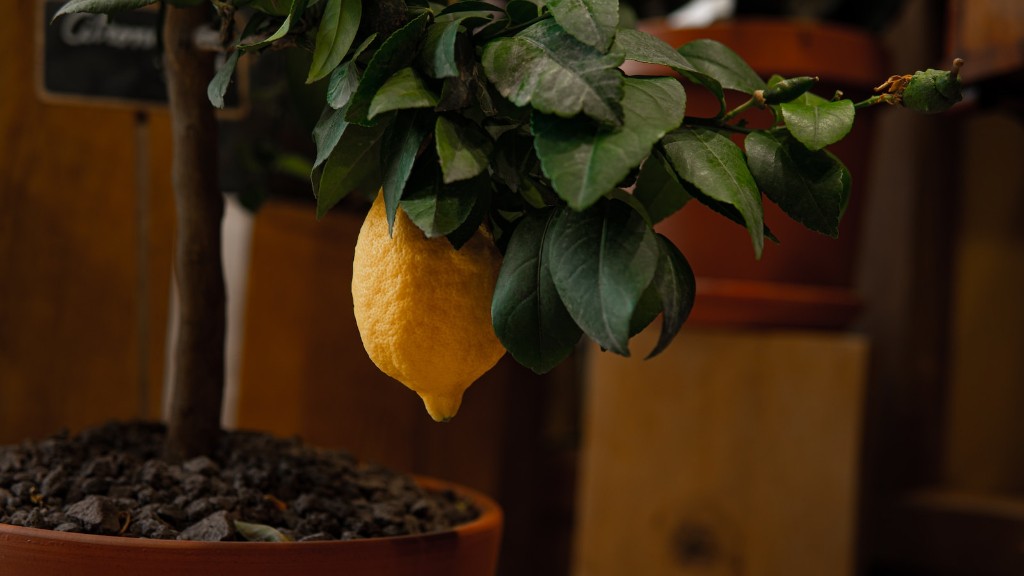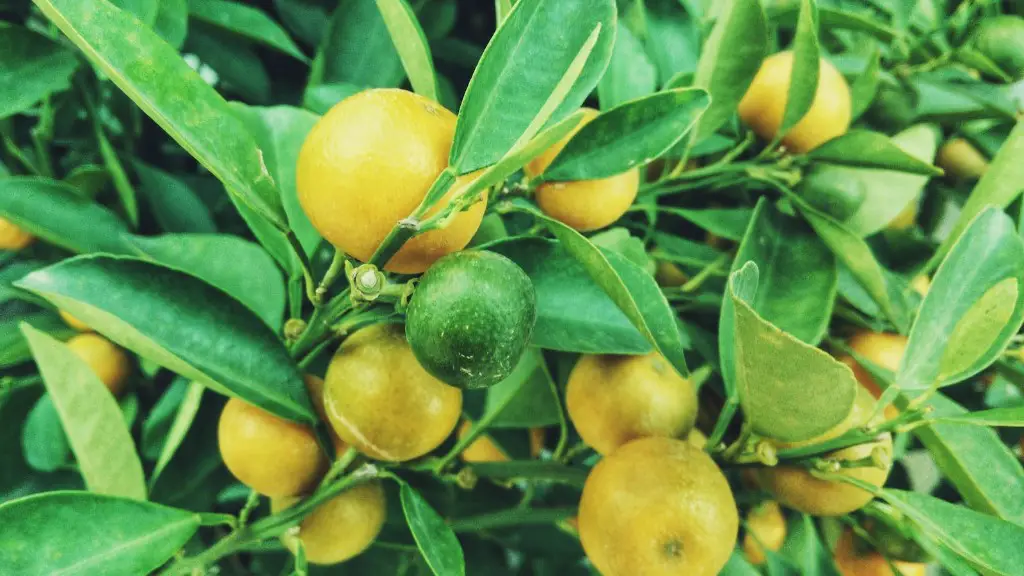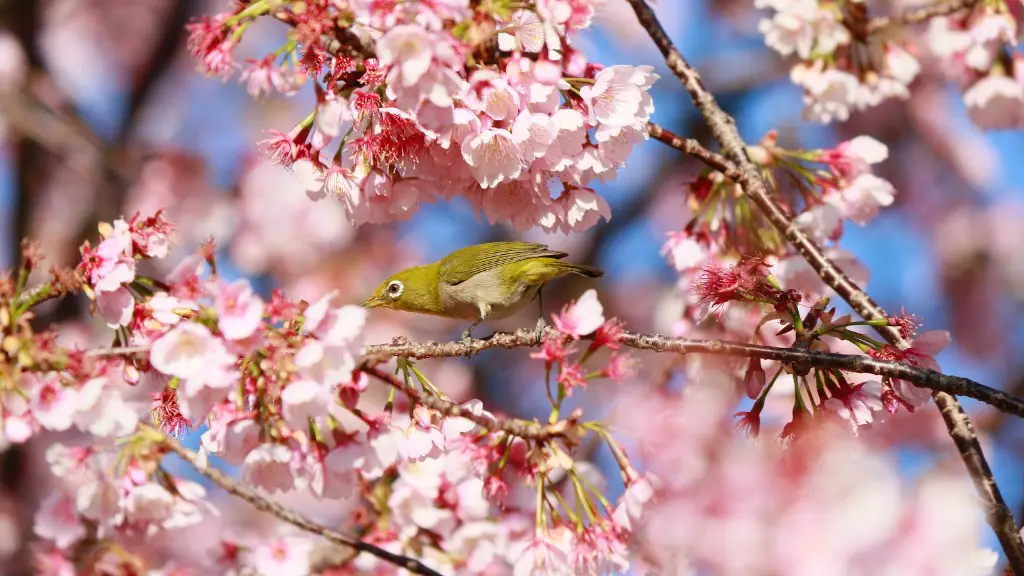Taking care of a lemon tree outdoors requires dedication and attention. It is important to remember that a healthy tree will produce a magnificent crop of delicious lemons. To ensure a productive tree, it is important to provide consistent attention and create the right environment for it. Being outdoors, you’ll need to stay vigilant and do the following:
Water the tree often. Make sure the soil is kept moist but not too wet. A lemon tree needs to be watered two to three times per week, but more during hotter days. Check the soil before watering as too much water can cause root-rot. Provide adequate fertilizer. Feed your tree with a balanced citrus fertilizer twice during growing season, spring and summer. Avoid over-fertilizing as this can cause leaf drop. Prune the branches. Prune the suckers and create a strong central leader for your tree. Also, prune out any old, dead wood. Add mulch. Apply a layer of mulch around the base of the tree, keeping it away from the stem. This will help maintain moisture in the soil and keep weeds away. Monitor pests and diseases. Check the tree for pests and diseases regularly. Treat with organic insecticides if necessary.
Cutting back on water in hot climates
In regions where temperatures soar, it is important to reduce the frequency of watering. You can observe the condition of the tree to determine when a change in the amount of water is necessary. If the lemon tree has yellow leaves, this may be a sign that too much water is being applied. In this case, reduce the amount of water being given to the tree.
When temperatures go above 95° Fahrenheit, the best you can do for your lemon tree is to reduce watering. Refrain from watering the tree. This kind of practice helps to minimize stress on the tree. On the plus side, the fruit won’t need to be harvested as often.
Additionally, too much water can cause diseases, so be sure to pay close attention to the amount needed for optimal growth. If the soil doesn’t feel moist, then it may be necessary to increase the frequency of watering.
Protecting the tree from cold temperatures
Temperatures below 32° Fahrenheit can damage the foliage and leave the trees vulnerable to disease. To keep your lemon tree safe from low temperatures, cover it with a frost cloth. The cloth should cover the entire tree and be tautly secured to protect your tree from the cold.
Heat lamps or outdoor heaters may also help in preventing the tree from being affected by the cold. Furthermore, using a pine straw or mulch groundcover helps stretch the roots a little deeper into the ground, making them better protected.
Be sure to eradicate any frost covered leaves as soon as possible. Otherwise, the damaged leaves may become a breeding ground for fungal and bacterial problems.
Best harvest practices and fruit quality
When harvesting your lemons, it is important to do so carefully. Dismantle the clusters and handle the fruit with care. To prevent rotting, only harvest lemons that are fully ripened.
Remember that ripe and mature lemons should have a full, yellowish-green hue. Be sure to use clean harvesting tools, such as gardening gloves and pruning shears, and avoid touching the stem or removing more than 25% of the foliage on any branch.
You must handle the fruit in a gentle manner to preserve its quality and avoid damage. Make sure you have all the tools you need before you attempt to harvest the fruit. Place your harvested lemons in netted bags to prevent them from rubbing against each other.
Using pruning methods to improve growth
Poorly tailored pruning practices shorten a lemon tree’s lifespan. It is important to understand how and when to prune if you want to keep your tree healthy and vigorous. Pruning is used to shape and maintain the size and strength of your tree, reduce the risks of diseases, and stimulate photosynthesis.
Using cuts that follow branch patterns or branch nodes, the amount of new growth can be reduced and the healthy growth improved. When pruning, leave 1/4 inch of stub after you cut the branch, this prevents water from seeping into the cut and causing damage. Also, make sure your pruning shears are sharp before you begin.
It is vital to prune your tree during the winter months when the leaves have shed, either before or after bloom season. Cut out any dead, dying or diseased twigs, branches, and elements that may be blocking the tree’s air movement. Additionally, make sure to remove any water sprouts that grow up in between the main branches.
Monitoring the sun & sheltering the tree
Most plants need sunlight to survive, but too much of it can be detrimental. A lemon tree needs at least 4–6 hours of direct sunlight a day. Make sure the tree has proper shelter from windy and snowy conditions, as these can quickly damage the foliage.
Using a shade cloth on sunny days can help protect the tree from extremes of temperature. Additionally, you can try to paing the trunk and branches in the summer months. Doing this will help is keep the bark and scions cool as well as reduce the amount of cosmetic damage.
Finally, make sure to keep the area around the lemon tree clean and weed-free. Weeds compete with the lemon tree for sunlight, water, and nutrients, so they should be eliminated to ensure healthy growth.




